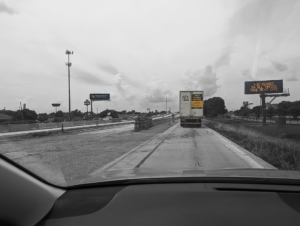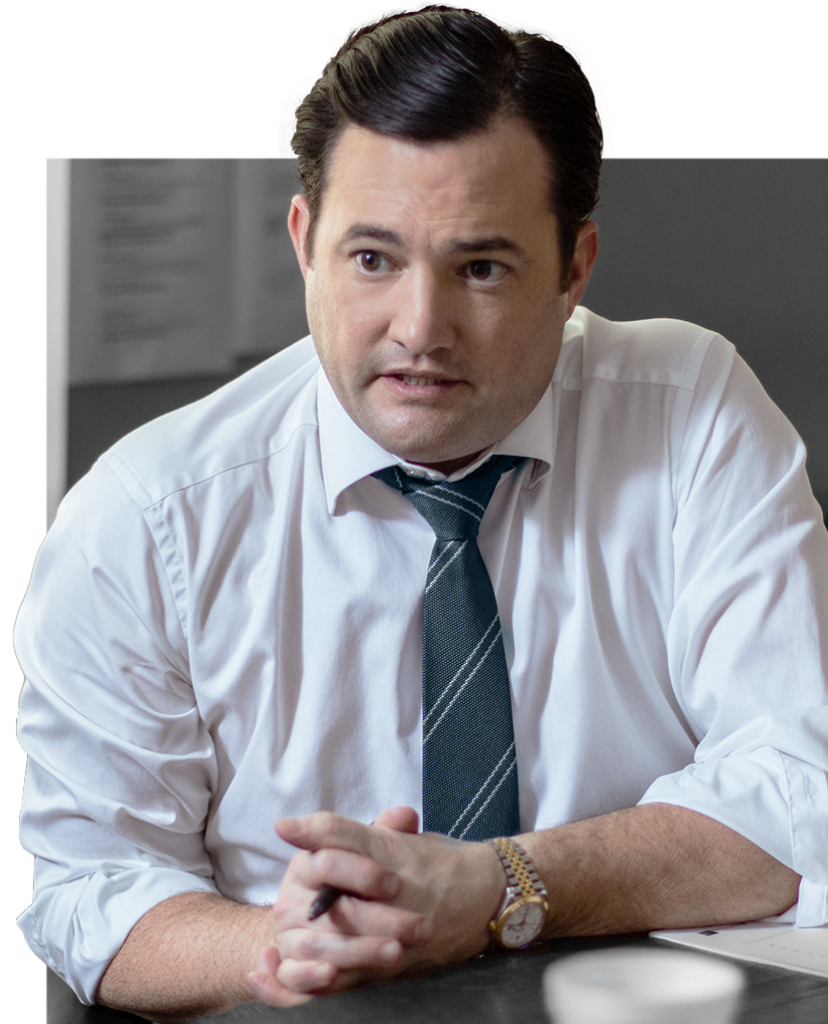When people think of an auto accident, they imagine a wreck involving two cars. What if an accident was more complicated than that? Take, for example, a hit-and-run accident. In such a scenario, the victim usually has minimal information about the driver or car that fled the accident scene. This makes the process of pursuing an insurance claim or filing a personal injury lawsuit challenging.
At times, traffic accidents are more complex than collisions between two vehicles. A phantom driver car accident is one such scenario that can bring unique challenges to the victims of car crashes. Suppose you are a victim of a wreck involving a phantom driver. In that case, you need to know how to handle them to ensure you receive maximum compensation from the at-fault driver and their insurance company.
But first, let’s find out what a phantom car accident is.
What Is a Phantom Driver Car Accident?
Picture this: You’re driving along the I-10 highway when a car suddenly swerves into your lane. This forces you to initiate defensive maneuvers to avert a crash. Unfortunately, your actions cause you to ram into another vehicle, hit a pedestrian, or slam into a roadside barrier. The at-fault driver keeps driving with no injuries or vehicle damage, unaware of what just happened due to their reckless actions.
Such accidents are known as “phantom driver accidents,” “no-contact accidents,” or “miss-and-run accidents.” Miss-and-runs are quite similar to hit—and-runs, with the main difference being that the former doesn’t involve any physical contact between the injured victim’s car and the phantom driver’s car. Drivers in such accidents come and go much like phantoms — ghosts.
What Are Some Examples of Phantom Driver Car Accidents?
In most cases, phantom drivers are engaged in distracted driving, unaware that their actions, such as texting while driving, pose serious — even lethal — consequences to other road users. It’s important to note that it is illegal to text while driving in the state of Louisiana.
Oftentimes, a phantom driver drifts into another lane, forcing another driver to swerve to avoid hitting them. Another example is when a car driver pulls out in front of a vehicle, forcing the motorist to brake quickly or swerve, resulting in a single-car or multiple-car accident.
Generally, the basic elements of a phantom driver accident involve:
- A motorist getting in the way of another car, forcing another motorist to take immediate action, such as swerving or hitting their brakes, to avoid a collision.
- Since the other driver reacted instantly to avoid colliding with the first driver, they end up in a car wreck.
- The phantom driver continues driving, unaware that their recklessness caused an accident. They may also keep driving to avoid the legal ramifications of their actions.
How Do Phantom Driver Car Wrecks Happen?
Here are some of the common ways these accidents happen in Louisiana and Texas:
- Swerving
- Falling cargo
- Running a red light
- Tossing items out of the window
- Merging without signaling
- Drifting into another motorist’s lane
- Rolling through an intersection
- Making an unsafe pass
What Should I Do if a Phantom Driver Hits Me?
A miss-and-run accident is as dangerous as a hit-and-run accident, as both drivers leave injured victims on roadways without stopping to help them. If you are in a car crash involving a phantom driver, you should take the same steps as in other types of motor vehicle wrecks. So first, call 911 and report the crash.
Law enforcement officers are your best chance to track down the driver, find them, and hold them accountable for your injuries and losses. While the police will do everything they can to figure out who led to your crash, here are some details you should note that can help with the investigation:
- The phantom driver’s license plate number — even a partial plate can be helpful
- The color of the vehicle
- The make and model
- The driver’s description, such as their sex, race, and presumed age
- Distinguishing features of the car, such as modifications and dents
- Where, when, and how the crash happened
- Whether it was a commercial truck, such as a garbage truck, a rideshare vehicle, or a maintenance van
- Witness information, including their names, addresses, and contact details
- The direction the driver was heading to
If you have any life-threatening injuries, seek immediate medical attention and keep a record of all accident-related medical expenses. You should also take pictures of the scene and report the accident to your insurance company. Finally, it’s advisable to contact a lawyer specializing in motor vehicle accident cases to help you deal with insurance companies, as these specialists will aggressively protect your rights and interests.
Is the Phantom Driver Liable for Damages?
A phantom driver can severely hurt your chances of securing fair compensation for sustained injuries and losses, such as vehicle damage. Rather than the at-fault driver staying behind and submitting their contact and insurance details, they flee the scene of the no-contact accident, just like hit-and-run drivers. The difference, however, is that in hit-and-run crashes, the police have a little evidence to go on, such as the other vehicle’s paint left on your vehicle or records of vehicles with similar accidents in the area.
When it comes to phantom driver car accidents, it may be challenging to find the phantom driver since the two vehicles never came into contact.
The foundation of all personal injury insurance claims in Louisiana and Texas is fault. Both states apply at-fault laws when determining liability, meaning that the driver — or their insurance company — is responsible for the injured victim’s injuries and property damage. Your Louisiana car accident lawyer must prove that the other driver was responsible for the accident in order for you to qualify for financial compensation.
Proving fault to an insurance company can be challenging, especially with no driver in sight to take responsibility for the crash. Providing intricate details about the incident to the police can help track down the phantom driver.
How Insurance Companies Handle Miss-and-Run Accidents and Phantom Drivers
Even if a driver doesn’t stop when you crash, they are still legally liable for the accident if their negligent actions directly led to it. The issue, though, is that you need information about the driver or their vehicle to file an insurance claim with the phantom driver’s insurance company.
You can still file a first-party claim with your insurance provider rather than the phantom driver’s provider. This claim may work if you have uninsured or underinsured coverage under your policy. If so, your insurer may cover damages such as medical bills and vehicle damage, even if you don’t share any blame for the crash. Call your insurance representative to find out if you have this type of coverage.
Keep in mind that your insurance company may deny uninsured benefits if there are no witnesses to collaborate your story or dashcam footage proving the phantom driver’s reckless actions. Some policies require collaborating witnesses for injured victims to qualify for uninsured benefits.
If you don’t have an uninsured or underinsured policy, your insurance company may deny your claim. In this scenario, your primary option for recovery is to hope the police arrest the phantom driver.
Third parties may also share the blame for your crash. For example, suppose the phantom driver swerved into your lane to avoid hitting a pothole. In that case, the agency in charge of road maintenance or contractors and subcontractors may be liable for your damages.
In rare instances, the phantom driver may return to the crash scene. If they admit fault, the settlement process may be somewhat straightforward. If they don’t, you may need to prove that their actions led to your accident. In both cases, it’s best to consult an experienced phantom driver car accident lawyer to understand your legal options.
What Happens if the Police Arrest the Driver?
If the phantom driver is arrested, you can file a personal injury suit or an insurance claim against the driver. This isn’t a straightforward process since you must build a strong case establishing the driver’s negligence. To do this, you must prove they owed you a duty of care and that they breached that duty by acting negligently. This breach, in turn, is directly linked to your accident and injuries.
You must also prove that you suffered damages due to the crash, such as:
- Medical bills
- Vehicle repair costs
- Property damage
- Lost wages
- Diminished earning capacity
- Pain and suffering
- Emotional distress
- Disfigurement
To better understand all available damages in your car accident case, it’s best to enlist the services of a personal injury lawyer who’ll evaluate your past and projected expenses to arrive at a fair settlement figure.
Injured in a Phantom Accident? Call Morris & Dewett Injury Lawyers for Legal Representation
Phantom-driver car crashes can be extremely difficult to handle. Convincing your insurance company that a driver who didn’t hit your car caused your accident is complicated. Do you think your insurance company will take your word and offer you compensation without evidence? The police may also be unable to identify the driver responsible for your no-contact accident.
Working with an experienced car accident lawyer near you is the best way to increase your chances of securing the best possible compensation from an insurance settlement or a trial. At Morris & Dewett Injury Lawyers, our legal team has years of combined experience helping accident victims in Louisiana and Texas. We’ll work tirelessly to help you get the compensation and justice you deserve.
Call (318) 221-1508 now to schedule your free case review. We are here to help.
SOURCES:
Phantom Definition & Meaning. The Britannica Dictionary. Accessed on May. 11, 2023.
Distracted Driving. Governors Highway Safety Association. Accessed on May. 11, 2023.
What Is an At-Fault Accident? The Balance. Accessed on May. 11, 2023.









